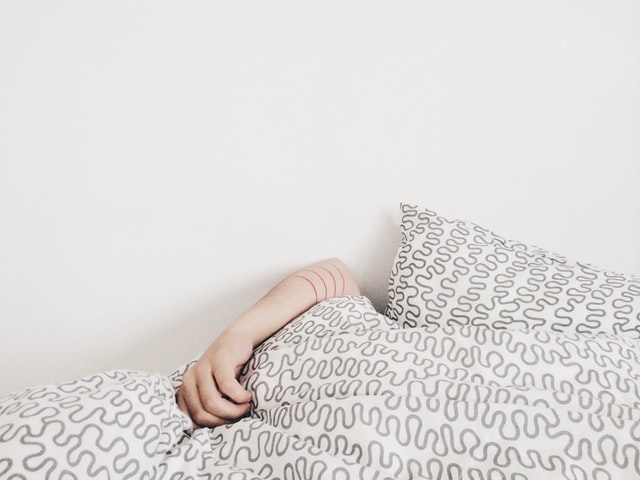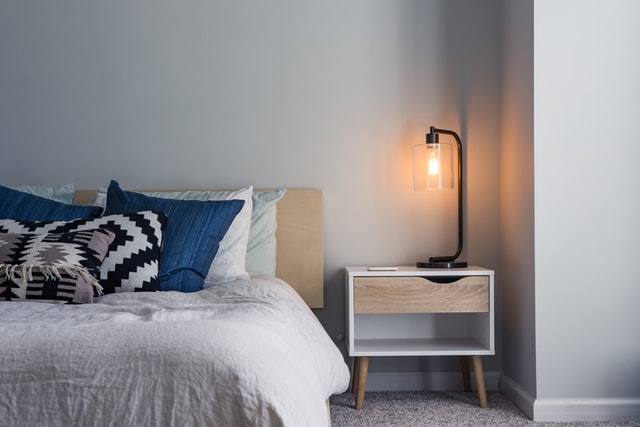We spend a lot of time sleeping, and for a good reason. It’s exceptionally important. Unfortunately for us, most people don’t have a healthy relationship with sleep, and this number is worse with children. Nearly 58% of middle schoolers and 73% of high schoolers get less than the recommended sleep. Sleeping problems can be attributed to a wide array of issues, such as the sleeping environment, routine, or schedule involved leading up to it. Even exercise and diet play a crucial role in sleep. There are ways to combat lousy sleep and sleep disorders. Transforming a child’s room (or your own) into the ideal sleep environment is a key component. This includes a lack of electronics, clutter, and even addressing preoccupations in one’s life. We’re going to break down the science of great sleep, show you the benefits of these habits, and advise you on the best ways to accomplish them. As a bonus, we’ll help you create the perfect sleep environment for you and your child’s bedroom so that you can feel rested in the morning.
Sleep Hygiene
Sleep hygiene can impact physical and mental health. By building a stable sleeping environment and creating routines designed to optimize sleep, humans can develop patterns that will grow more successfully over time. Habits are something humans can utilize extremely effectively. We’re going to examine what makes up good and bad sleep hygiene. The benefits of sleep go beyond feeling rested, and we want to foster those benefits.
Signs of Poor Sleep Hygiene
The better your sleep hygiene, the better your sleep will become. Like all hygiene practices, such as brushing your teeth, the more serious you take it, the better your results over time will be. This can require a proper schedule and proper care.
The biggest impact on sleep hygiene is a wildly changing sleep schedule. Having a schedule will normalize your brain to get a full sleep each night. By going to sleep each night randomly, or worse, by wildly varying your wake-up times in the mornings, your brain and body will be exhausted. This fatigue leads to lower energy and moods, which can lead to further bad habits down the line. You might argue this is fine for the work week, but you want to sleep on the weekend. This may seem logical because you’re getting more sleep. Isn’t that the point? Nope. The point is to feel rested after every sleep. You’re confusing your brain by not getting up at the same time, even on the weekends. You may feel rested two days of the week but not the other five. Try getting up at the same time every day, and you will find yourself well-rested every day of the week, even though you’re not sleeping in.
To help with this, have a nighttime routine that tells your brain that you’re going to sleep. Maybe you brush your teeth, put on some lotion, and hit the lights. Keep your lights to a warm, cozy glow rather than something bright and glaring. Also, put away your phone. It only serves to try and keep you awake. Try to set it down thirty minutes or even an hour before you sleep.
You can improve your sleep during the day. Avoid drinking caffeine or other stimulants (looking at you, sugar) in the evenings. In fact, try not to eat massive meals too close to bedtime. Light snacks digest well. Oxygen in the blood really helps you sleep as well. To get this, you need to exercise during the day. Take a walk around the block, or burn out some squats, pushups, or pilates. There are great wind-down yoga classes you can find.
Finally, use your bed for sleeping. It’s not a place to eat snacks, watch Netflix, or study. You want your mind to link the bed to sleep. Even reading before bed. Have other spaces for these activities, even if they are part of your wind-down routine. Leave the bed for your rest.
The Benefits of a Good Sleep

Good sleep habits can prevent sleep disorders. If your child has insomnia, narcolepsy, sleep apnea, or restless leg syndrome, take them to a doctor so you can combat it. The benefits of a good night’s sleep for both children and adults are plentiful.
Consistent restful sleep will improve your immune system and will fight off more illnesses. It also improves your brain by increasing concentration, cognition, performance, and productivity. It can also help your metabolism, especially if you follow our advice about avoiding lousy food and large meals before bed. Eating healthy (even if you eat a lot) will burn clean, and the rest improves your metabolism. As a bonus, if you’re well-rested and have energy, your body will crave less high-energy foods, such as carbs and sugars.
Poor sleep schedules can lead to depression surprisingly easily. By getting the sleep you need, you’ll get along better with others, and your moods throughout the day will tamper with control. You’ll also make better decisions throughout the day.
As an adult, we also need to be mindful of how we sleep; a wrong position can make our neck or back hurt and also give us extra wrinkles! Read more on how to treat sleep wrinkles in this article.
What Makes You Sleep
Your brain regulates your body’s internal clock in an area called the suprachiasmatic nucleus (SCN). When it’s dark, the SCN triggers a gland to release melatonin, which is what makes you feel sleepy. SCN also triggers the release of cortisol and other chemicals to wake you up.
There are ways to get your body to produce more melatonin. Start by getting some sunlight. This may seem contradictory, but sunlight increases serotonin, which plays a role in melatonin production. Another way to create serotonin is by eating foods rich in tryptophan, such as turkey, chicken, bananas, and peanuts. Avoid blue light at night, including lights from screens and phones. This light is artificially natural and interferes with melatonin production. Taking a warm bath may relax the body, which can also tell it to produce less cortisol and help you wind down.
How Much Sleep Do Children Need
Infants aged 1 – 2 may need up to 16 hours of sleep daily, including naps. Children aged 3 – 5 may require 13 hours. Children 6 – 12 it’s recommended to get 9 – 12 hours, and teenagers are advised to get 8 – 10. For adults, it’s recommended we get at least seven hours.
Keep in mind that if you’re sick or physically exerted, you may need more from time to time. Listen to what your body tells you.
Tips to Improve Your Child’s Sleep Quality
As mentioned above, a bedtime routine is a key component to helping a child wind down and create the mental link to sleep. This means brushing your teeth, but it could also include some relaxing exercises before bed, such as reading or meditating. There are a variety of meditation apps for different ages — check them out. It also means shutting off devices afterwards.
If your child is anxious about something, talk to them about it. Listen to their worries, and validate them. You can tell your child that you understand their fears, but you can also encourage bravery simultaneously. These check-ins can be built as part of the routine, followed by some relaxation before bed. The same advice applies to children’s sleep quality and adults. Ensure the room is a nice temperature, dark, and that the bed is used for sleeping.
Another sleep technique is relaxing sounds or stories while you drift off. If your child needs some sounds to lull them to sleep, apps can do that. I recommend a portable blue-tooth speaker in their room, so the device is still not present. These apps can read stories, play soothing nighttime sounds, or even have lullabies.
Create a Space For Better Sleep

Declutter
A useful trick is to keep your room free of clutter — clean space for a clean mind. If you don’t know where to put your clutter, buy a container for it. It provides a sense of organization, which destresses your mind. It turns your sleep space into a relaxing room.
Mattress
Be sure to replace your mattress every five or so years, if you can. If not, definitely be sure to do so when you notice the mattress contains deep impressions or you wake up in pain. Understanding your needs can greatly assist you in buying a mattress, and there are a variety of different types.
An Innerspring is the traditional mattress and generally has good back support. It offers a wide range of firmness and can be budget-friendly. Springs can become noisy over time, offering less pressure relief on joints.
Memory foam or other types of foam mattresses are softer for side sleepers and those with joint pain. They’re also silent and durable. They’re expensive and can potentially trap body heat or create a sinking feeling due to their softness. Gel-Infused foam mattresses can help regulate the heat better. Polyfoam is another variation that decreases the sinking sense. If you’re also interested in contributing to the environment, consider an organic latex mattress that can help soothing pressure relief and offers superior support.
Hybrid mattresses are a combination of the two. It eliminates the sinking feeling while offering pressure point release for joints. It doesn’t compromise on back support. It helps regulate motion and can be ideal for couples with differing needs. These are expensive mattresses.
Air mattresses are not ideal for long-term sleeping arrangements. If you use one, make sure it’s one with a portable pump, so you can adjust the air to match your preferred firmness.
Sheets
The thread count on bedding isn’t exactly important, but the material sheets are made of can absorb excess moisture to keep you comfortable. There’s a wide variety, so we’ll examine their pros and cons.
Cotton stays cool and is very durable. There is a variety of cotton you can get. 100% cotton is usually Upland cotton, but you can upgrade to Pima or Egyptian. Jersey cotton tends to stretch and wear quite easily and isn’t ideal. Good cotton breathes, and it generally doesn’t hold stains.
Bamboo is hypoallergenic, soft, and sustainable. They’re also wrinkle-resistant — bamboo is awesome.
Polyester sheets can be rough, so you’d need a blend for a softer sheet. They’re affordable and wrinkle-resistant, but they can stain pretty badly.
Linen is naturally cooling and hypoallergenic. They can feel stiff and aren’t as soft as their cotton counterparts.
Silk sheets can be expensive, as producing them requires harvesting from silkworms. They involve high levels of maintenance and care. They are also hypoallergenic and quite cool, and they add a romantic flair to a bedroom.
Microfiber is an extremely fine polyester that doesn’t stain. It’s not as breathable as cotton, but if you sleep in a cold climate or with your dog, this is an ideal choice.
Satin can add romance to a room, but knit satin can feel quite rough. You will want to find woven satin instead.
Pillows and Sleep Position
You should also keep fresh pillows. A pillow’s life cycle is 1 – 2 years. Depending on how you sleep, that should dictate what type of pillow you get. Soft sleepers tend to enjoy soft pillows with high lofts. Stomach sleepers are the opposite. Back sleepers require a sweet spot with a firm support but a loft that doesn’t push the neck forward.
Down Pillows are moldable, durable, and soft. They also tend to retain body heat, making it easy for you to overheat. They’re difficult to clean and not often ethically sourced.
Feather pillows are lightweight and can be molded, but you must fluff them to maintain their loft. They also retain heat and can be difficult to clean.
Cotton is hypoallergenic and odorless, but it can become lumpy and requires constant cleaning. It doesn’t contour well to the head.
Latex pillows can be expensive and are not hypoallergenic. They also can have an odor to them. On the plus side, they’re biodegradable and great for breathability and cooling.
Memory Foam is excellent for pain relief support, as it contours to your body. The trick is finding one that doesn’t inhibit its own breathability nor retain your body heat.
Shredded Memory Foam is a more customizable option, but it can be delivered overstuffed and is prone to wearing out sooner than others.
Bamboo pillows are difficult to clean and tend to be heavy. They have some big benefits: they are hypoallergenic, antimicrobial, and very cooling.
Gel pillows are designed to keep you cool at night and are easy to care for. These hypoallergenic pillows can be expensive and receive complaints about their firmness.
Polyester doesn’t breathe, does not last very long, and develops lumps. It is affordable, hypoallergenic, and quite lightweight.
Buckwheat pillows are very malleable, durable, and great for keeping cool. They tend to make some noise when moved around. They’re heavy and can be quite firm.
Microbead pillows retain heat and aren’t built to last. They’re quite malleable and were created as an alternative to buckwheat pillows.
Other Things

Keep the room cool. Generally, between 60 – 72 degrees F is ideal. It may not be great to blast the AC all night, so perhaps get a ceiling fan or even a cooling mattress pad. Keep the room dark. This not only includes light from screens but emphasizes them. The blue light from screens throws off melatonin and confuses the entire sleep process. Consider blocking all electronic lights or even simply buying a sleep mask. You also want somewhere quiet to sleep. If that’s not possible, consider noise-canceling headphones or even ear plugs.
Having a great place to sleep and a bed you use solely for sleeping is very important. It creates that link for your mind to know it’s time to sleep. This link only improves over time. Other ways to improve your sleep hygiene are a set sleeping routine, consisting of a wind-down period, a lack of screentime, and a normalized schedule. A good diet and exercise during the day make a world of difference. All of these combine to put you in the correct headspace for sleep when you need it and work together to have you feeling rested each and every day.




